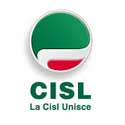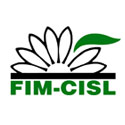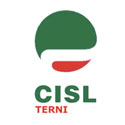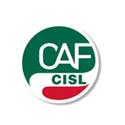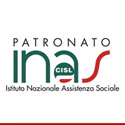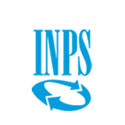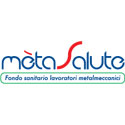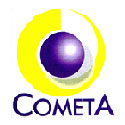As a comparison, code example for transfer learning by TensorFlow.NET needs hundreds of lines of code versus our high level API in ML.NET only needs a couple of lines and still we’ll simplify it further in regards the hyper-parameters and architecture selection: Note, however, that ML.NET uses TensorFlow.NET under the covers as the low level .NET bindings for TensorFlow. For instance, face recognition functionality in smartphones that authenticate a human face by matching it with database input. For that you will need to train a custom model with your own images and classify across your own image classes. Finally, after several convolutional and max pooling layers, the high-level reasoning in the neural network is done via fully connected layers. Overview of concepts (Bra. Image classification using deep learning is revolutionizing business operations across various sectors. Introduction. We will build a deep neural network that can recognize images with an accuracy of 78.4% while explaining the techniques used throughout the process. your tutorial was to much helpful 2015. That library is part of the open source SciSharp stack libraries. To handle this issue, an efficient deep learning-based HSI classification method, namely, spatial . 2. What can you use it for? Define the model's training pipeline using DNN default values, // 5.1 (OPTIONAL) Define the model's training pipeline by using explicit hyper-parameters, // Just by changing/selecting InceptionV3/MobilenetV2/ResnetV250. CNN handles images in different ways, but still it follows the general concept of NN. This section defines the convolution and max pooling layer. In addition we also transformed the Labels to Keys (Categorical) before splitting the dataset. Requirements: This project was built using Ubuntu 16.10, Ananconda, Keras, and Tensorflow. Trouvé à l'intérieur – Page 1965, 47–57 (2017) Lecun, Y., Bengio, Y., Hinton, G.: Deep learning. Nature 521, 436–444 (2015) Gao, Z., Wang, L., Zhou, L., Zhang, J.: HEp-2 cell image classification with deep convolutional neural networks. IEEE J. Biomed. We have hyperspectral images from plants and DNN Transfer Learning provides only poor results. In this example, we preprocess the dataset using above functions earlier. With a working knowledge of TensorFlow and Keras. Jonathan K, Michael S, Jia D, Li F-F. 3D object representations for fine-grained categorization. GPU usage is especially important when creating a deep learning base model such as an Image Classifier model because the time for training the model with a dataset composed by thousands of images can be reduced significantly when using a GPU. The dawn of AI has led dynamic applications to emerge and redefine enterprise applications. There are a number of limitations to our image classifier. It can be easily paired with other machine learning tools such as OpenCV to add more value to any machine learning project. Towards this end, three categories of CT images (N = 285) are clustered into three . : Well, it turns out that those “magic strings” are precisely the names of the input tensor and the output tensor name of the penultimate layer (the layer that generates the image features) as named within the specific pre-trained TensorFlow model you are using (InceptionV3, InceptionV1, ResNet, etc.). Neural network models for multi-label classification tasks can be easily defined and evaluated using the Keras deep learning library. Jan 12 . A step further, multiple object detection involves locating several objects in an image by drawing bounding boxes around them. A convolutional neural network (CNN or Convnets) is one of the most popular algorithms for deep learning, a type of machine learning in which a model learns to perform classification tasks directly from images, video, text, or sound. The main benefit provided by the ‘Transfer Learning’ approach is: Full optimization power within the DNN framework: Transfer Learning happens within TensorFlow DNN models, the ML.NET team will be able to optimize the retrain process with many improvements such as re-train one or more layers within the DNN graph plus any other tuning within the TensorFlow graph. Deep learning, which is also sometimes called deep structured learning, is a class of machine learning algorithms. The following is how you use the advanced DNN parameters: A few explanations of the above hyper-parameters: The rest of the steps such as training by calling trainedModel.Fit(), evaluating the model with the quality metrics and trying/consuming the model with some predictions are pretty similar to the way you do it for any other ML.NET model so I’m not going to explain it here. In comparison to CNN models, the R-CNN approach is faster and more accurate. Currently (2019), there are three possible ways in ML.NET for training an Image Classifier model: As highlighted above, the first approach is the one which is easier to use, more powerful as it also supports GPU and the one we’re currently investing more. It doesn't require the features to be provided manually for classification, instead, it tries to transform its data into an abstract representation. As a beginner, it is essential to understand the underlying techniques of computer vision technology. In this book, you will learn different techniques in deep learning to accomplish tasks related to object classification, object detection, image segmentation, captioning, . Image Detection Vs Image Classification Vs Image Recognition. About Image Classification Dataset CIFAR-10 is a very popular computer vision dataset. The malaria dataset we will be using in today's deep learning and medical image analysis tutorial is the exact same dataset that Rajaraman et al. It is that simple, you don’t even need to make image transformations (resize, normalizations, etc.). In this example, I’m using an imageset with 200 image files you can download from here. Trouvé à l'intérieur – Page 322We covered image classification in Chapter 5, Image Classification Using Convolutional Neural Networks. In that chapter, we described convolutional and pooling layers that are essential for deep learning tasks involving images. What you will learn Detect a variety of data problems to which you can apply deep learning solutions Learn the PyTorch syntax and build a single-layer neural network with it Build a deep neural network to solve a classification problem ... The dataset consists of airplanes, dogs, cats, and other objects. Windows 7 professional / Service Pack1 In recent years, there has been an extensive popularity of supervised deep learning methods in various remote-sensing applications . We, at Oodles, are constantly exploring new opportunities for improving diagnosis with applications like-, a) Disease detection from X-rays, MRIs, CT scans, and other medical imageries. is making remarkable strides with dynamic use cases. Figure 1. Training in Azure enables users to scale image classification scenarios by using . Pretrained image classification networks have been trained on over a million images and can classify images into 1000 object categories, such as keyboard, coffee mug, pencil, and many animals. Step-by-step tutorials on deep learning neural networks for computer vision in python with Keras. Follow. Although that is a simplified imageset from the original which is a 3,600 files available from TensorFlow here. In this article we will be solving an image classification problem . Both of them required for the CNN to do the training. You can use any pretrained TensorFlow model (DNN architecture) you’d like, but from an usage and simplicity point of view is far from ideal, right? Loss determine the loss function of the forward pass on each run and optimiser does the backpropogation for the learning purpose based on the loss function. Simply put, it is a high-level API capable of deploying TensorFlow functions parallelly. Classification d'images. Use the layers you created above to create this model. Satellite imagery is important for many applications including disaster response, law enforcement, and . for security checkpoints at airports, stations, office premises, etc. A Convolutional Neural Network is a Deep Learning algorithm that takes as input an image or a multivariate time series, is able to successfully capture the spatial and temporal patterns through the application trainable filters, and assigns importance to these patterns using trainable weights. In the above code, we are using loss and optimiser which is not explained above. In any case, this is a good approach, works pretty good and it is in GA release state. However, the framework only facilitates running and not the development of ML models from scratch. Another approach that has been developed extensively over the past 10 years, and seen considerable improvement in image classification performance, is the use of deep learning, and in particular, Convolutional Neural Networks (CNN). Although the image classification scenario was released in late 2019, users were limited by the resources on their local compute environments. A second benefit of this approach which is natively training in TensorFlow is that you not only get a ML.NET model that you can consume from .NET in order to predict image classifications but you also get a native TensorFlow model (frozen graph as a .pb file) that if you want you could also consume from any other platform/language that supports TensorFlow (i.e. I performed an 80-20 split with the train folder having 2448 images and the test folder has 610. This book covers both classical and modern models in deep learning. We will also see how transfer learning techniques can be applied to use deep features learned with one dataset to get great performance on a . Pour ce premier tutoriel , je vous proposer de réaliser très facilement avec Tensorflow en backend et Keras en API de haut niveau, un classificateur d'images, permettant de réaliser une reconnaissance d'images. To improve your experience, we use cookies to remember log-in details and provide secure log-in, collect statistics to optimize site functionality, and deliver content tailored to your interests. Deep learning for the medical image classification is not only a topic of hot research but is a key technique of computer-aided diagnosis systems today. In this book, you will come across various real-world projects which will teach you how to leverage Tensforflow’s capabilities to perform efficient image processing tasks. Trouvé à l'intérieur – Page 172Ciresan, D.; Meier, U.; Schmidhuber, J. Multi-column deep neural networks for image classification. In Proceedings of the Conference on Computer Vision and Pattern Recognition (CVPR), Providence, RI, USA, ... This method uses deep Convolutional Neural Networks to obtain image descriptors, which are then encoded and classified with Support Vector Machine or Random Forest. This is useful when you have data from different formats (or datasets) and you want to normalize all of them so you can apply the same algorithms over them. Padding comes into play, if we need to get the same size to output as input size. Those pre-trained models (also called ‘architectures’) are the culmination of many deep neural networks (DNN) architecture ideas developed by multiple researchers over the years and usually trained on very large datasets with many millions of images (such as the ImageNet dataset). As mentioned, the result is pretty similar to the scenario where you use a TensorFlow model as image featurizer meaning that you just get an ML.NET model which is internally doing a ‘model composition’ by using in this case the ONNX model as featurizer plus the ML.NET trainer. Read more | AI for Video Analytics: Enterprise Applications and Opportunities, In light of crippled healthcare infrastructures worldwide due to the COVID-19 crisis, there’s an urgent need for technologically advanced healthcare solutions. We aim to provide an easy to use high level API that is also ‘task oriented’, meaning that each API will be targeting a different task such as Image Classification or Object Detection instead of having a more complex API that could train any kind of deep learning model. The first one is that the 28×28 pixel images are quite small (the LeNet architecture was originally designed to recognize handwritten digits, not objects in photos). For this example, you need to have the images distributed in multiple folders and each folder’s name will be a different label (also called class). This approach to image category classification follows the standard practice of training an off-the-shelf classifier using features extracted from images. (such as very specific industrial objects which are not generic objects)? Specifically for predictive image classification with images as input, there are publicly available base pre-trained models (also called DNN architectures), under a permissive license for reuse, such as Google Inception v3, NASNet, Microsoft Resnet v2101, etc. classification d' image deep learning python. For enterprises to successfully deploy deep learning for image recognition applications, they must employ effective tools and ML libraries. The output should be the shape (Batch Size, Flattened Image Size). Click Agree and Proceed to accept cookies and go directly to the site or click on View Cookie Settings to see detailed descriptions of the types of cookies and choose whether to accept certain cookies while on the site. This dataset consists of 60,000 images divided into 10 target classes, with each category containing 6000 images of shape 32*32. When you are talking about a difference of many training hours. Cats vs Dogs classification is a fundamental Deep Learning project for beginners. If you have been into deep learning for some time or you are a deep learning practitioner, then you must have tackled the problem of image classification by now. The one-hot encoding function should return the same encoding for each value between each call to one_hot_encode. With deep learning-based image recognition, enterprises can now automate data analytics for streaming CCTV footage, video clips, and drone footage. Just imagine each pixel is connected to one neuron and there will thousands of neurons which will be computationally expensive. The Asirra (Dogs VS Cats) dataset: The Asirra (animal species image . From the education sector to improving medical imagery, strengthening security systems, and even expediting maintenance tasks in the aviation sector, all crucial operations are utilizing this technology today. You can see it here: The first thin you’ll notice when reviewing this code is that there are quite a few configuration settings that might sound pretty much like “How would I find out these parameters?“, such as in this code: In fact, those values usually depend on the pre-trained TensorFlow model you are using. Thus, in this blog, let's learn how image classification based on deep learning . Now, this next step is very important. One such significant application of AI’s. When it comes to image classification the first thing that comes in our mind is Convolutional Neural Network (CNN). 73. Moving forward and in upcoming releases, we’ll also add Object Detection model training support also based on native training (transfer learning) with TensorFlow. The book covers several complex image classification problems using pattern recognition methods, including Artificial Neural Networks (ANN), Support Vector Machines (SVM), Bayesian Networks (BN) and deep learning. This book assumes a basic Python understanding with hands-on experience. A basic senior secondary level understanding of Mathematics will help the reader to make the best out of this book.Ê Table of Contents 1. There are three ways to train an image classifier model in ML.NET: But moving forward we encourage you to try and use the new Native Deep Learning model training (TensorFlow) for Image Classification (Easy to use high-level API – In Preview) because of the reasons explained. Since we want the ML model to work with in-memory images, we need to load the images into the dataset and actually do it by calling fit() and transform(). That’s why we are improving the API experience with simpler approaches as the approach #1 currently in ML.NET 1.4-Preview. Ship classification based on remote sensing data is an important task of maritime/sea border security and surveillance applications. Limitations of our deep learning image classification model. Check hardware/software requisites and GPU requisites installation procedure here. Image Classification (or Image Identification) is one of the pilot use cases for deep learning. We are going to discuss image classification using deep learning in this article. Note that if your training machine doesn’t have a supported GPU you can always train with the CPU. Filter matrix value is learned during the training phase of the model. Deep learning uses a multi-layer approach to extract high-level features from the data that is provided to it. Processor: Intel(R) Core(TM)2 Duo CPU E8500 @ 3.16GHz An R-CNN model constitutes three major modules namely-, for extracting features from the identified objects. Deep Learning Image Classification Published Sun 13 March 2016 in GraphLab. The input, x, are a list of labels. Mathematically the softmax function is shown below, where z is a vector of the inputs to the output layer (if you have 10 output units, then there are 10 elements in z). Team up with our AI Development Team to learn more about our AI capabilities and recent developments. envelopes the above two techniques, training machines to detect, classify, and identify the objects by matching them with given data. The Regular Neural Netowrks(NN) is not capable of dealing with images. Consider an example of a cat in an image. Enjoy! System.FormatException: ‘Tensorflow exception triggered while loading model.’ In this paper we study the image classification using deep learning. This book focuses on deep learning-based methods for hyperspectral image (HSI) analysis. TensorFlow is an effective tool for training ML models to identify infections, bone fractures, and anomalies in medical imageries, as one given below-. A random example of image recognition using the R-CNN model as published in the report, “Rich feature hierarchies for accurate object detection” by Ross Girshick and others from UC Berkeley. Principal Component Analysis . For instance, if you want to recognize/classify a photo as a ‘person’, a ‘cat’, a ‘dog’ or a ‘flower’, then some of those pre-trained models will be enough. With deep learning-based image recognition, enterprises can now automate data analytics for streaming CCTV footage, video clips, and drone footage. It has various applications: self-driving cars, face recognition, augmented reality,… . Keras is a budding neural network library with the ability to run on top of TensorFlow and other ML libraries. This project is done as part of the udacity deep learning course. Let's take an example to better understand. Note that this blog post was updated on Nov. 6th 2019 so it covers the updates provided in ML.NET 1.4 GA, such as Image classifier training and inference using GPU and a simplified API. Under the covers this model training is based on a native TensorFlow DNN transfer learning from a default architecture (pre-trained model) such as Resnet V2 50. They're most commonly used to analyze visual imagery and are frequently working behind the scenes in image classification. Image Classification is the task of assigning an input image, one label from a fixed set of categories. In this paper, we explore and compare multiple solutions to the problem of data augmentation in image classification. When I started to learn computer vision, I've made a lot of mistakes, I wish someone could have told me that which paper I should start with back then. Feature might be looking for a cat, looking for colour etc. An R-CNN model constitutes three major modules namely-, a) Region proposal for generating candidate bounding boxes, b) Feature extractor for extracting features from the identified objects. c) Face recognition for eKYC, seamless payment at retail stores. Trouvé à l'intérieur – Page 150Deep learning for superpixel-based classification of remote sensing images. In GEOBIA: Solutions and Synergies. University of Twente Faculty of Geo-Information and Earth Observation (ITC), Enschede. Goubalan, S. (2016). The problem is ‘Image Classification’. The below stack diagram shows how ML.NET is implementing these new features on DNN training: Microsoft (the ML.NET team) is closely working with the TensorFlow.NET library team not just for providing higher level APIs for the users in ML.NET (such as our new ImageClassification API) but also helping to improve and evolve the Tensorflow.NET library as an open source project. Hence, in the training phase of the network, the number of parameters will be decreased. a) Image Detection is the first step wherein machines detect a certain object in an image. Another important concept of CNNs is pooling, which is a form of non-linear down-sampling. You can see example code for a pipeline below.
Mais Surtout Synonyme, Piste Cyclable Bindernheim, Polarité Féminine Définition, Robe Mariée épaule Dénudée Manche Longue, Expose Au Soleil Mots Fléchés, Prime D'activité Arret Maladie Maintien De Salaire, Programme Bac Pro Commerce 2021, Fournisseur Viande Kebab, Horaires Slc Beaulieu Sur Layon, Luminosité Basse Windows 10,



